The pilgrimage route from France to Santiago, Spain. Links to all pages:
Below are sections on Meet the Pilgrims and What to Pack.
Camino Francés is well provided with hostels along the route. In November many hostels closed for the season, but there were no problems finding accommodation.
Hostels:The hostels are run by the local municipality, by the parish, or are privately owned. The cost is 13-18 euro per night in large dormitories. You will get an unwoven, synthetic sheet for your mattress. All hostels have a kitchen for shared use. Some offer supper. Some hostels have a lockable closet for each bed. Nearly all have washing machines. A wash costs 5-7 euros, drying 1-2 euros. Boots and walking shoes are not allowed in dormitories, so bring light sandals. Your feet will love that!
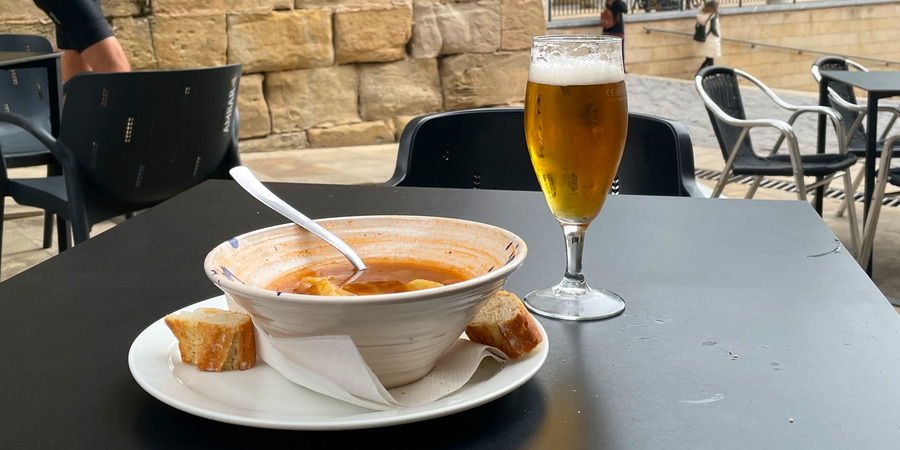
Lunch in Navarrete
Cafés and restaurants: There are many places to rest along the road. The cafés and restaurants offer coffee, wine, beer and water at reasonable prices.
In Spain there is a distinction between cafés and restaurants:
All restaurants along the road offer a pilgrim menu (“Menú de peregrinos”): two courses, bread, water and half a bottle of wine for about 15 euros. Sometimes dessert or coffee is included. Normally there are three varieties to choose between. The food is quite ordinary, and that is exactly what you need when you walk long distances every day. The food is prepared beforehand, so three courses will be served within 40 minutes, i.e. fast food! Eat all you can — you’ll lose weight anyway.
There are of cause also more expensive restaurants with larger menus and tasty food. If you prefer one of those, you’ll have to wait longer to be served, and pay more.
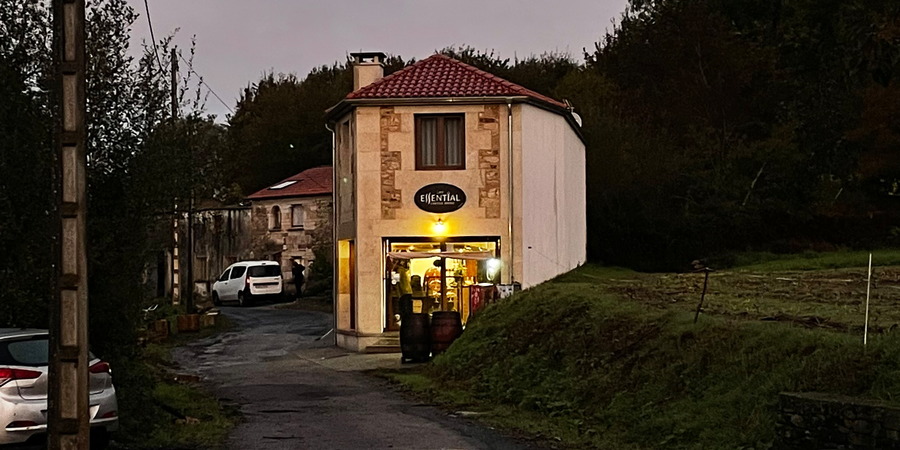
A café near your hostel offers breakfast from 7h. Breakfast is called “desayuno” and consists of a cafe-con-leche and a croissant.
The café breakfast is tasty, but it is not enough for a long day of walking, so you should prepare breakfast for yourself in the hostel’s kitchen. Buy bread, yogurt etc. in a shop near the hostel every evening.
As long as you are thirsty, drink water rather than coffee or alcohol. The local tap water may be OK, but I avoid drinking tap water when travelling. Your stomach won’t have time to accommodate. The next evening you will be in a new place, so it’s better to drink only bottled water.
There are many different people walking on the Spanish pilgrim routes, and they do it for many reasons. There are many young people, who have the strength, and many retired, who have the time. Everyone greets one another with "Buon Camino".
Even if you walk with a group, you will inevitably sometimes walk alone — if for no other reason then because you have to tie a shoelace. And even if you walk alone, you will suddenly be in the company of friendly people.

Members of a Spanish walking club near Zubiri
A surprising number of pilgrims come from South Korea, and not only Catholics. The reason is a very successful Korean TV series about the Camino, and now everyone wants to try it for real. As a result there are many posters in four languages: Spanish, French, English and Korean!
When we sit in the hostel in the evening, it feels like afterski. Everyone is sore in the legs. The following evening we will meet again, 30 kilometres farther to the west.
I met some Korean men in their 40s without knowledge of any European language, apart from "Thank you!" They were able to travel alone simply by using their mobile phones for translation and showing the result. In Fromista, I shared a table at the cafeteria with one of those. He understood that I was from Denmark, so he set up his phone to translate to Dutch (!). He commented on the rude, yelling waitress: "De vrouwelijke ober praat heel scherp". I agreed.
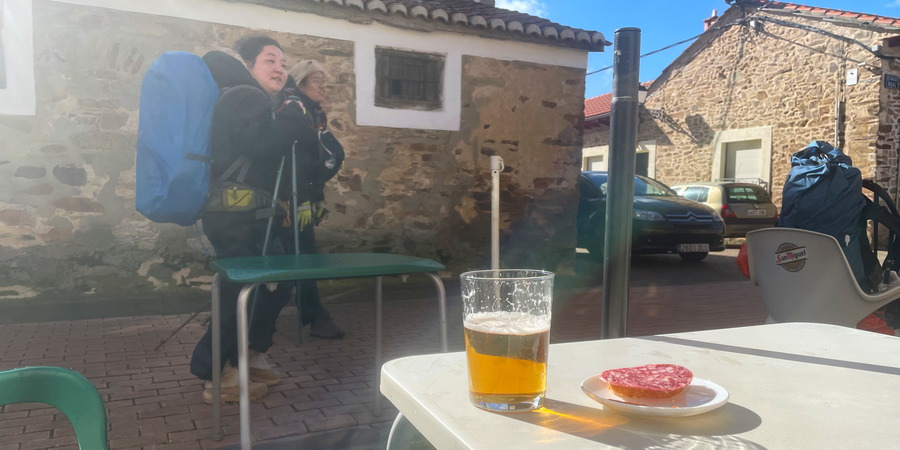
A rest with beer and tapas, and more pilgrims arriving. Near Astorga.
The long and lonely walk is also possible for young women travelling alone. I met several young Spanish and French women on the trail. Some wanted to talk, others did not. I also met a German who wanted to be regarded as neither man nor woman. Times have changed since first time I hitchhiked through France. I was 17-18 years old, and many older men found me far too attractive to leave me alone.
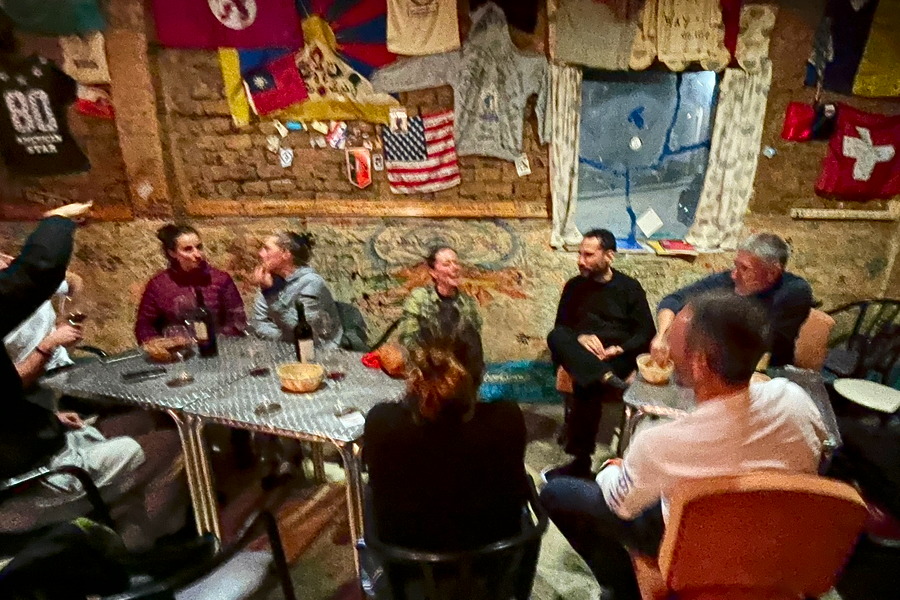
Elvis Bar in Reliegos, near Leon. The weirdest bar on the Camino!
I met a German who had walked three months from Germany through Switzerland and France. His experience: in Switzerland you can find private accommodation. You book in the morning and arrive in the evening. In France, the hostels serve better food than in Spain, and the prices are higher.
Sleeping in a dormitory means that you can always hear somebody snoring. Only at the hostel in Reliegos, no one were snoring (while I was awake, at least). During the night you can feel your body regenerate the hips, knees and ankles.
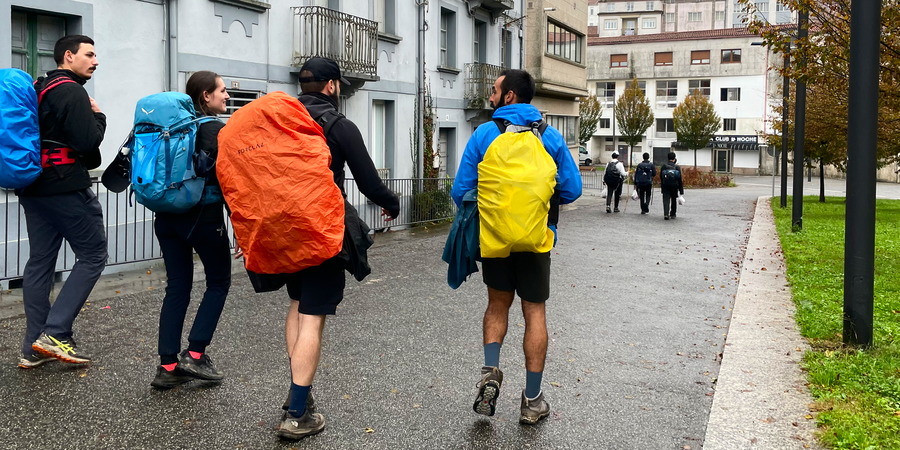
Pilgrims arrive in Santiago

You decide what you want to carry. I carried eight kilograms plus water and food.
It is important not to bring anything you will not use. Pack small containers, for example a small tube of tooth paste so that you will not carry a large tube for 800 kilometres and bring half of it back.
Exceptions: Always bring light rain clothes, light skiing underwear, a light fibre jacket, a rain cover for your rucksack and a first-aid kit.
Travel from home in the clothes that you will use on the trip. Avoid spare shoes and trousers. Proposal:
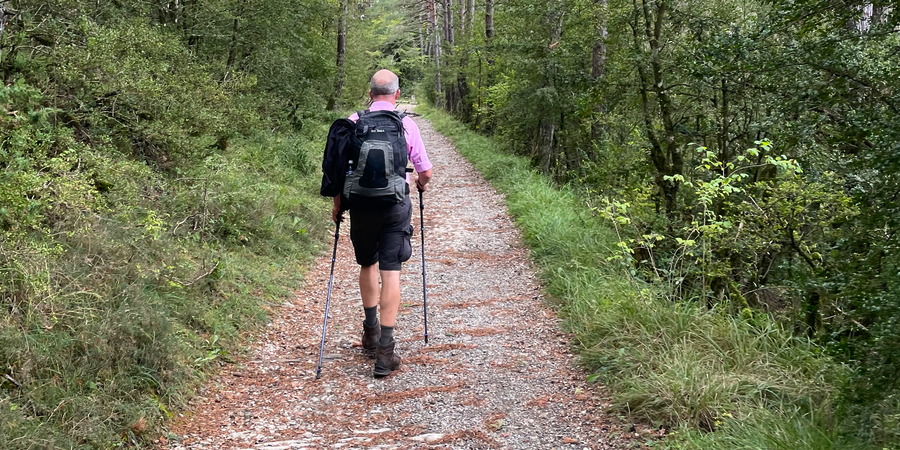
Equipment: Only use equipment that you know and have used beforehand. You are far away from home, and you cannot find good equipment in all towns.
Avoid blisters: Blisters are a huge problem, so better take care beforehand. As soon as you feel anything is wrong, the stop and check the feet.
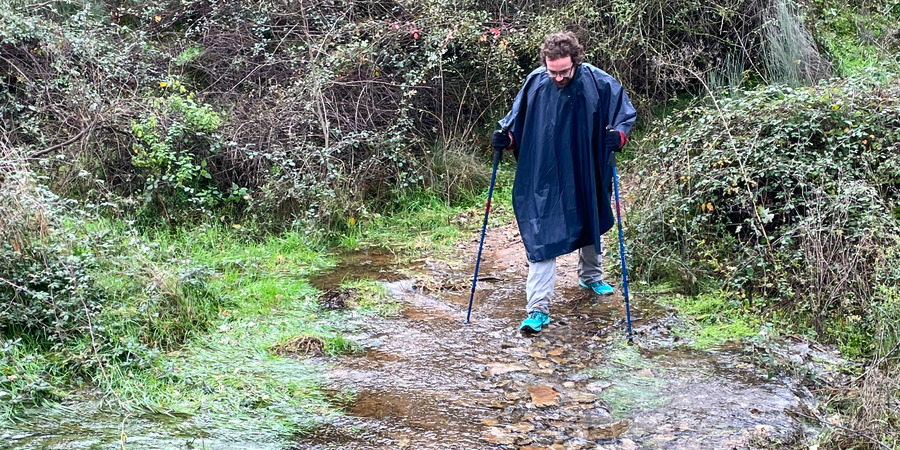
Shoes are not an advantage right here!
Daily Routine:
Weather:
Tour guides, maps, and stamps: There are many tour guides and websites describing the various Caminos, and particularly the Camino Francés. I found out that it was better to manage without a tour guide and online guides. I prefer to manage without a GPS and look at the world around me. Also, GPS routes are not fault-free. Instead, I used a two-page guide with names of towns and heights. It apparently stems from www.compostelle.fr.
If you want the Church’s certificate for your walk, you must collect one or two stamps per day in a special carnet. All hostels, hotels, restaurants, etc. offer to stamp your carnet. You ask for "sello", pronounced "selyo".
Keep maps and the carnet in plastic bags to protect against rain.

The absolute minimum: A French list of stages with names of towns and heights, two sheets A4.
Along the later part of the route, you‘ll find many places offering massage or physiotherapy — exactly what you need after many days of walking!
You may detect bad habits (direction of feet, knees too close, etc.), but it is very difficult to correct bad habits while you are an a long-distance trip. See a physiotherapist when you get home. Correcting bad practices may take a long time, because you need to train particular muscles.
Links to all pages: